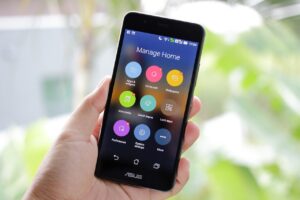Introduction
In today’s interconnected digital landscape, mobile apps have become an integral part of our lives. They assist us with a multitude of tasks, from communication and productivity to entertainment and health. However, with the convenience of apps comes a growing concern for user data privacy and security. Android, the world’s most popular mobile operating system, has implemented a robust framework for managing app permissions and safeguarding user data privacy. In this article, we will delve into how Android handles app permissions and protects user data privacy.

-
App Permissions on Android
1.1. What Are App Permissions?
App permissions are access rights that apps request from users to access specific device features or data. These permissions ensure that apps can perform their intended functions, but they also raise important privacy considerations.

1.2. Types of App Permissions
Android categorizes permissions into different groups, such as:
- Normal Permissions: These permissions are automatically granted when users install an app. They include basic functionalities like internet access, vibration, and access to the network state.
- Dangerous Permissions: Dangerous permissions require explicit user consent. They include access to sensitive data and features such as camera, location, contacts, and SMS.
- Special Permissions: Special permissions are a subset of dangerous permissions that require additional user confirmation. For example, apps requesting access to location data need to prompt users for consent at runtime.
1.3. Runtime Permissions
Starting with Android 6.0 (API level 23), Android introduced runtime permissions, which require apps to request dangerous permissions at the time of use, rather than at installation. This gives users more control over their data and privacy.

-
User Control and Consent
2.1. Granular Control
Android allows users to grant or deny permissions individually. If an app requests multiple permissions, users can choose to grant some and deny others, providing granular control over data access.

2.2. Permission Prompts
When an app requests a dangerous permission, Android presents a permission prompt to the user. Users can choose to grant or deny the request. Additionally, they have the option to deny the request and select “Don’t ask again,” preventing the app from requesting the permission in the future.
2.3. Privacy Dashboard
Android 12 introduced a Privacy Dashboard feature that provides users with a clear overview of how often apps have accessed sensitive data like location, microphone, or camera. This empowers users to review and manage their privacy settings more effectively.
III. App Permissions Framework
3.1. AndroidManifest.xml
App developers declare the permissions their app requires in the AndroidManifest.xml file. These declarations inform the Android system and users about the app’s data access needs.

3.2. Check Permissions at Runtime
Developers must also check for permissions at runtime before attempting to access sensitive data or features. If the app does not have the necessary permissions, it should request them at runtime, following Android’s permission model.
3.3. Permission Groups
Permissions are organized into groups, which makes it easier for users to understand why an app needs access to certain data or features. For example, the “Location” group includes permissions related to GPS and network-based location services.
3.4. Permission Review
Android 11 introduced the “One-Time Permission” feature, which allows users to grant a permission for a single use only. This enhances user control and privacy.

-
Data Privacy Measures
4.1. Scoped Storage
Android 10 (API level 29) introduced Scoped Storage, a privacy-focused storage model that restricts app access to external storage. Apps can only access their own dedicated directories by default, improving data isolation and security.
4.2. Background Location Access
Starting with Android 10, apps that require access to location data in the background must provide a foreground service, which ensures that users are aware of and can control background location access.
4.3. Approximate Location
Android 12 introduced the option for users to share their “approximate” location with apps, reducing the granularity of location data when precise location information is not essential.
4.4. Encrypted Storage
Android offers encryption mechanisms for securing data at rest, including full-disk encryption and file-based encryption. This ensures that even if physical access to the device is obtained, the data remains protected.
-
Developer Responsibility
5.1. Data Minimization
App developers are encouraged to follow the principle of data minimization, which means collecting and retaining only the data necessary for the app’s intended purpose. Unnecessary data collection can increase privacy risks.
5.2. Data Protection
Developers should implement robust data protection measures, including encryption and secure storage practices, to safeguard user data against unauthorized access.
5.3. Privacy Policy
Apps that collect user data are often required to have a privacy policy that outlines data handling practices, including data collection, storage, and sharing. Transparency is key to building user trust.

5.4. Security Best Practices
Developers must follow security best practices, such as implementing secure authentication, protecting APIs, and regularly updating their apps to address vulnerabilities.
-
Android’s Evolving Privacy Features
6.1. Privacy Dashboard
Android 12 introduced the Privacy Dashboard, which provides users with a detailed view of how and when apps accessed sensitive data. Users can access this feature to review app behavior.
6.2. Mic and Camera Indicators
Android 12 also added indicators to the status bar to alert users when apps are actively using the device’s microphone or camera. This provides users with additional visibility and control over data access.
6.3. Approximate Location
Android 12 introduced the option for users to share their approximate location, reducing the granularity of location data when precise location information is not essential.
6.4. Clipboard Access Restrictions
Starting with Android 10, apps are restricted from accessing the clipboard contents unless they are in the foreground. This prevents potential misuse of sensitive data.
VII. Conclusion: Balancing Innovation with Privacy
In conclusion, Android has made significant strides in protecting user data privacy and giving users more control over their data. The permission model, runtime permissions, and privacy features introduced in recent Android versions underscore Google’s commitment to enhancing user privacy.
Developers also play a critical role in ensuring that their apps adhere to privacy best practices and only collect data that is necessary for their app’s functionality. Balancing innovation with privacy is an ongoing challenge in the ever-evolving landscape of mobile app development. As Android continues to evolve, it will likely introduce more privacy features to keep user data safe and secure while empowering developers to create innovative and trustworthy apps.

